
Aerodynamics is the study of the motion of air, particularly when affected by a solid object, such as an airplane wing. It involves topics covered in the field of fluid dynamics and its subfield of gas dynamics, and is an important domain of study in aeronautics. The term aerodynamics is often used synonymously with gas dynamics, the difference being that "gas dynamics" applies to the study of the motion of all gases, and is not limited to air. The formal study of aerodynamics began in the modern sense in the eighteenth century, although observations of fundamental concepts such as aerodynamic drag were recorded much earlier. Most of the early efforts in aerodynamics were directed toward achieving heavier-than-air flight, which was first demonstrated by Otto Lilienthal in 1891. Since then, the use of aerodynamics through mathematical analysis, empirical approximations, wind tunnel experimentation, and computer simulations has formed a rational basis for the development of heavier-than-air flight and a number of other technologies. Recent work in aerodynamics has focused on issues related to compressible flow, turbulence, and boundary layers and has become increasingly computational in nature.

The Whitcomb area rule, named after NACA engineer Richard Whitcomb and also called the transonic area rule, is a design procedure used to reduce an aircraft's drag at transonic speeds which occur between about Mach 0.75 and 1.2. For supersonic speeds a different procedure called the supersonic area rule, developed by NACA aerodynamicist Robert Jones, is used.

In aerodynamics, a hypersonic speed is one that exceeds five times the speed of sound, often stated as starting at speeds of Mach 5 and above.

Supersonic speed is the speed of an object that exceeds the speed of sound (Mach 1). For objects traveling in dry air of a temperature of 20 °C (68 °F) at sea level, this speed is approximately 343.2 m/s. Speeds greater than five times the speed of sound (Mach 5) are often referred to as hypersonic. Flights during which only some parts of the air surrounding an object, such as the ends of rotor blades, reach supersonic speeds are called transonic. This occurs typically somewhere between Mach 0.8 and Mach 1.2.

In physics, a shock wave, or shock, is a type of propagating disturbance that moves faster than the local speed of sound in the medium. Like an ordinary wave, a shock wave carries energy and can propagate through a medium but is characterized by an abrupt, nearly discontinuous, change in pressure, temperature, and density of the medium.
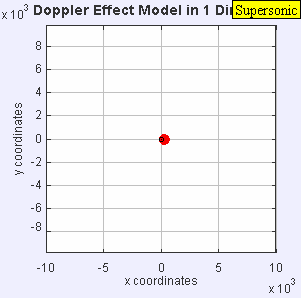
A sonic boom is a sound associated with shock waves created when an object travels through the air faster than the speed of sound. Sonic booms generate enormous amounts of sound energy, sounding similar to an explosion or a thunderclap to the human ear.

A supersonic transport (SST) or a supersonic airliner is a civilian supersonic aircraft designed to transport passengers at speeds greater than the speed of sound. To date, the only SSTs to see regular service have been Concorde and the Tupolev Tu-144. The last passenger flight of the Tu-144 was in June 1978 and it was last flown in 1999 by NASA. Concorde's last commercial flight was in October 2003, with a November 26, 2003 ferry flight being its last airborne operation. Following the permanent cessation of flying by Concorde, there are no remaining SSTs in commercial service. Several companies have each proposed a supersonic business jet, which may bring supersonic transport back again.

A waverider is a hypersonic aircraft design that improves its supersonic lift-to-drag ratio by using the shock waves being generated by its own flight as a lifting surface, a phenomenon known as compression lift.

A scramjet is a variant of a ramjet airbreathing jet engine in which combustion takes place in supersonic airflow. As in ramjets, a scramjet relies on high vehicle speed to compress the incoming air forcefully before combustion, but where as a ramjet decelerates the air to subsonic velocities before combustion using shock cones, a scramjet has no shock cone and slows the airflow using shockwaves produced by its ignition source in place of a shock cone. This allows the scramjet to operate efficiently at extremely high speeds.
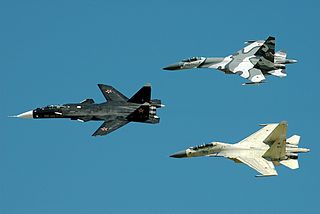
A swept wing is a wing angled either backward or occasionally forward from its root rather than perpendicular to the fuselage.
In aeronautics, wave drag is a component of the aerodynamic drag on aircraft wings and fuselage, propeller blade tips and projectiles moving at transonic and supersonic speeds, due to the presence of shock waves. Wave drag is independent of viscous effects, and tends to present itself as a sudden and dramatic increase in drag as the vehicle increases speed to the critical Mach number. It is the sudden and dramatic rise of wave drag that leads to the concept of a sound barrier.
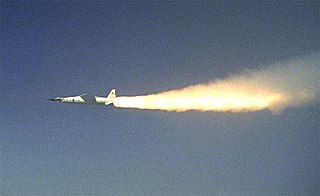
The NASA X-43 was an experimental unmanned hypersonic aircraft with multiple planned scale variations meant to test various aspects of hypersonic flight. It was part of the X-plane series and specifically of NASA's Hyper-X program developed in the late 1990s. It set several airspeed records for jet aircraft. The X-43 is the fastest jet-powered aircraft on record at approximately Mach 9.6.
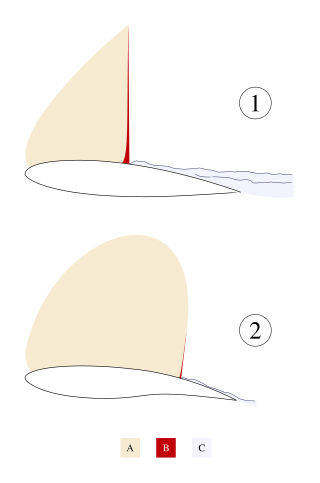
A supercritical aerofoil is an airfoil designed primarily to delay the onset of wave drag in the transonic speed range.

Mach tuck is an aerodynamic effect whereby the nose of an aircraft tends to pitch downward as the airflow around the wing reaches supersonic speeds. This diving tendency is also known as tuck under. The aircraft will first experience this effect at significantly below Mach 1.

The Busemann biplane is a theoretical aircraft configuration invented by Adolf Busemann, which avoids the formation of N-type shock waves and thus does not create a sonic boom or the associated wave drag. However in its original form it does not generate lift either. A Busemann biplane concept, which provides adequate lift, and which can reduce the wave intensity and drag but not eliminate them, has been studied for a "boomless" supersonic transport.

A supersonic aircraft is an aircraft capable of supersonic flight, that is, flying faster than the speed of sound. Supersonic aircraft were developed in the second half of the twentieth century. Supersonic aircraft have been used for research and military purposes, but only two supersonic aircraft, the Tupolev Tu-144 and the Concorde, ever entered service for civil use as airliners. Fighter jets are the most common example of supersonic aircraft.
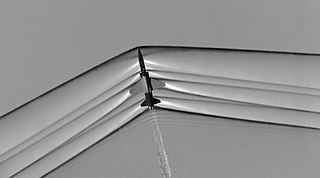
An oblique shock wave is a shock wave that, unlike a normal shock, is inclined with respect to the direction of incoming air. It occurs when a supersonic flow encounters a corner that effectively turns the flow into itself and compresses. The upstream streamlines are uniformly deflected after the shock wave. The most common way to produce an oblique shock wave is to place a wedge into supersonic, compressible flow. Similar to a normal shock wave, the oblique shock wave consists of a very thin region across which nearly discontinuous changes in the thermodynamic properties of a gas occur. While the upstream and downstream flow directions are unchanged across a normal shock, they are different for flow across an oblique shock wave.

The Boeing X-51 Waverider is an unmanned research scramjet experimental aircraft for hypersonic flight at Mach 5 and an altitude of 70,000 feet (21,000 m). The aircraft was designated X-51 in 2005. It completed its first powered hypersonic flight on 26 May 2010. After two unsuccessful test flights, the X-51 completed a flight of over six minutes and reached speeds of over Mach 5 for 210 seconds on 1 May 2013 for the longest duration powered hypersonic flight.
A supersonic airfoil is a cross-section geometry designed to generate lift efficiently at supersonic speeds. The need for such a design arises when an aircraft is required to operate consistently in the supersonic flight regime.
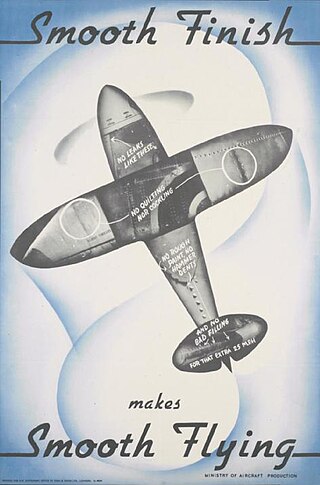
Aerodynamics is a branch of dynamics concerned with the study of the motion of air. It is a sub-field of fluid and gas dynamics, and the term "aerodynamics" is often used when referring to fluid dynamics



















